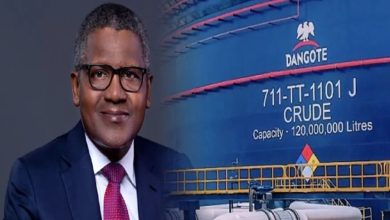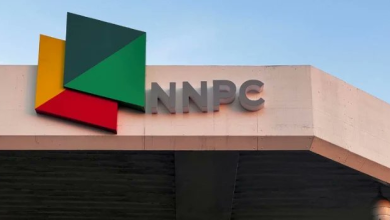India to Launch Free Trade Talks with Russia-Led Eurasian Bloc in Strategic Economic Shift
India is gearing up to launch Free Trade Agreement talks with the Eurasian Economic Union, aiming to expand its trade influence and tap into resource-rich Central Asian markets.
The move signals New Delhi’s growing shift toward strategic non-Western alliances, with potential boosts in exports, energy access, and regional trade routes through key infrastructure like Iran’s Chabahar Port.
India is set to commence formal negotiations for a Free Trade Agreement (FTA) with the Eurasian Economic Union (EAEU) before the end of 2025, marking a significant step in the country’s ongoing strategy to broaden its trade partnerships. This development was publicly confirmed by the Russian Trade Commissioner to India, Andrey Sobolev, during a business event held in New Delhi on June 2, 2025.
The EAEU is a regional economic union comprising five post-Soviet countries: Russia, Belarus, Kazakhstan, Kyrgyzstan, and Armenia. These countries collectively represent a key geopolitical and economic region, particularly rich in natural resources such as oil, gas, and minerals. With its member states already forming a substantial economic bloc, an FTA with India would be a major milestone in their efforts to expand global economic partnerships.
India, on the other hand, views the proposed agreement as an opportunity to diversify its export markets and strengthen its access to raw materials and energy supplies. The partnership is expected to open new avenues in multiple sectors, including electronics, heavy machinery, engineering products, and agricultural commodities. Additionally, the agreement could significantly boost trade via the Chabahar Port in Iran, which is operated by India and envisioned as a gateway for enhanced trade with Central Asia.
Strategic drivers behind the move
The prospective FTA is not merely an economic venture. It also holds substantial geopolitical implications. As the global order continues to undergo rapid transformation, particularly with rising tensions between major powers, India is actively pursuing partnerships that could help it maintain autonomy in its foreign policy and economic strategies.
Observers believe that India’s decision to move forward with the EAEU is also aimed at counterbalancing China’s growing influence in the Eurasian region. China has invested heavily in the Belt and Road Initiative, which includes substantial infrastructure and energy investments across many of the same countries that make up the EAEU. By entering into a trade pact with the bloc, India positions itself as a significant player in Central Asia’s economic landscape and asserts its intent to remain a relevant force in Eurasian geopolitics.
Furthermore, this initiative aligns with India’s larger trade diversification agenda, which has become more urgent amid the disruptions in global supply chains caused by the COVID-19 pandemic and ongoing geopolitical shifts. Establishing trade corridors through strategic infrastructure such as the Chabahar Port allows India to create alternate routes for goods movement, reducing its dependence on traditional pathways that are increasingly vulnerable to global tensions.
Track record of the EAEU in trade agreements
The Eurasian Economic Union has been actively pursuing trade agreements with various countries in recent years. Its current roster of trade pacts includes Free Trade Agreements with Vietnam, Iran, Singapore, and Serbia. Negotiations are also underway with countries such as Egypt, the United Arab Emirates, and Indonesia.
Adding India to this list would represent one of the EAEU’s most significant achievements in terms of economic diplomacy. India, as the world’s fifth-largest economy and a rapidly growing market, offers the EAEU access to a vast consumer base and a robust technology and manufacturing sector. A successful FTA between India and the EAEU could potentially lead to an upsurge in bilateral trade, cross-border investments, and industrial cooperation.
Next steps and implementation outlook
Although the formal timeline for negotiations has not yet been finalized, both India and the EAEU have indicated strong mutual interest in moving forward. Preparatory discussions, including consultations with industry stakeholders and the drafting of initial frameworks, are likely to take place in the coming months.
Experts predict that the negotiations could proceed at a faster pace than previous trade talks, owing to the convergence of strategic interests and the relatively high level of engagement already established between India and individual EAEU member countries. The terms of reference, which will lay out the foundational rules and expectations for the trade deal, are expected to be exchanged soon.
Indian government officials have emphasized that any agreement reached would be structured to protect the interests of domestic industries while promoting export growth. Meanwhile, the EAEU is likely to prioritize sectors such as energy, infrastructure, and logistics, where Indian expertise and investment could make a substantial impact.
Implications for India’s global trade strategy
India’s move toward a trade pact with the Eurasian bloc is part of a broader recalibration of its global economic outreach. In recent years, the country has intensified efforts to strengthen economic ties with regions outside the traditional Western sphere, including Southeast Asia, Africa, Latin America, and now Central Asia.
This shift reflects New Delhi’s understanding that long-term economic security cannot be based solely on existing relationships. The rise of new economic centers and the increasing fragmentation of global alliances have made it imperative for India to cultivate alternative trade channels and supply sources.
In conclusion, the planned FTA negotiations between India and the Eurasian Economic Union represent more than just another trade deal. They symbolize a deepening of strategic and economic ties between two important regions and may serve as a blueprint for how emerging economies can collaborate to shape the future of global commerce.



